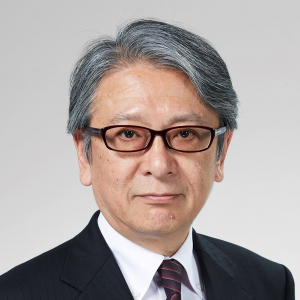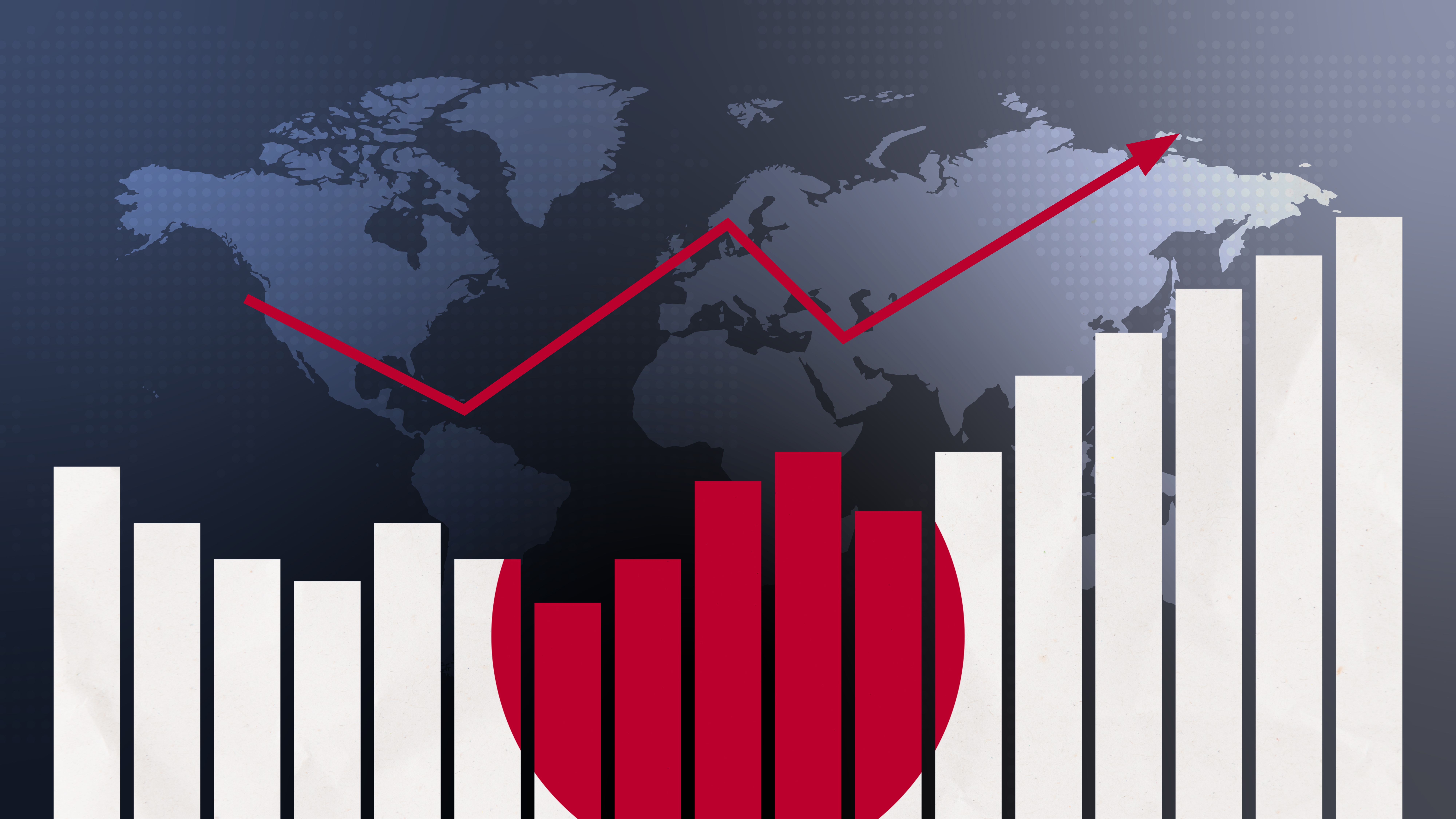
Japanese Monetary Policy in a Post-Reflationist World: Time for a Recalibration?
November 30, 2022
R-2022-068E
A decade of zero-bound interest rates and QQE has failed to spur wage growth in Japan, calling into doubt the logic behind such policies. With BOJ Governor Kuroda’s term nearing its end, an open debate is needed on the role of monetary policy in Japan’s revitalization strategy.
* * *
Japan has finally reached and exceeded its inflation target of 2%, but the Bank of Japan shows no signs of abandoning its ultra-loose monetary policy. In recent statements, BOJ Governor Haruhiko Kuroda has affirmed the central bank’s intent to “continue monetary easing with the goal of achieving the price-stability target, accompanied by wage increases, in a stable and sustainable manner.” The message is that, although the consumer price index is now rising at a rate beyond 3%, this is only because of such factors as higher food and energy price as well as a weaker yen. In the absence of significant wage increases, a 2% inflation rate will still be difficult to sustain.
I agree with this judgment, but I must also point out that when the BOJ launched its “quantitative and qualitative monetary easing” policy (QQE), almost 10 years ago now, Kuroda dismissed the possibility that wages could remain stagnant even as consumer prices rose. His acknowledgement of this disconnect is yet another indication that the logic behind “reflationist” policies has collapsed.
Is Deflation the Root of All Evil?
A decade ago, what most clearly distinguished the reflationists from their opponents—who had significant influence in economics at the time—was the view that deflation itself was the basic cause (as opposed to the result) of Japan’s long-term economic stagnation.[1] To critique this theory, let us consider the opposing view. The anti-reflationists held that deflation had taken hold because wages had stopped rising owing to such factors as the collapse of the asset-price bubble, Japanese industry’s declining competitiveness, and successive financial crises.[2]
Opinions vary as to the relative importance of these factors, but I personally believe that the financial crisis of 1997–98 played a decisive role. This had brought even iconic Japanese firms to the brink of collapse, and industry appeared to reach a tacit agreement with labor to the effect that management would protect workers’ jobs providing the unions did not demand wage hikes. (Such protection extended only to regular employees, though, and companies quickly raised their reliance on non-regular workers.)[3] This view is consistent with the fact that deflation, in the sense of falling consumer prices, began in 1998.
On the other hand, the reflationist argument that the economic slump was caused by falling prices is counterintuitive, given that prices are the most lagging economic variable. This view derives from such hypotheses as the quantity theory of money, which holds that both inflation and deflation are monetary phenomena, so deflation can be attributed to a failure of monetary policy. However, the quantity theory of money has long since diverged from empirical data in its assertion of a simple relationship between prices and the money supply. In addition, it places insufficient importance on the zero lower bound on interest rates.
More influential, perhaps, was New Keynesian economics, which swept the field of macroeconomics in the 1990s and 2000s. New Keynesian is really just neoclassical economics with the addition of price stickiness (along with monopolistic competition). It provides no fundamental explanation for deep recessions or long-term stagnation. Moreover, it tautologically holds that inflation expectations determine the underlying inflation rate. Nonetheless, thanks to price stickiness, it allows for persistent declines in prices (deflation), and such deflation, when paired with the zero-bound of interest rates, allows for an explanation of long-term stagnation (or a deflationary spiral). In other words, by the very nature of the model, long-term stagnation can only be caused by deflation. Kuroda’s position strongly reflected this school of thought, while former Deputy Governor Kikuo Iwata was more influenced by the quantity theory of money.
Today, more than a decade after the bankruptcy of Lehman Brothers ushered in the Great Recession, the arguments of New Keynesian economics are far less persuasive. Significantly, the 2022 Nobel Prize in Economic Sciences was awarded to Ben Bernanke, Douglas Diamond, and Philip Dybvig for explaining the role of bank failures and financial crises in triggering economic depressions.[4] We can no longer maintain the position that deflation is the root of all evil or assert (as Yale University economist Koichi Hamada once did) that reflationary policies represent the global standard in macroeconomics.
The Broken Link Between Inflation and Wages
But let us return to the relationship between wages and prices. Particularly instructive in this regard is a recent study by Naohiko Baba, chief Japan economist at Goldman Sachs.[5] Using data from the 1980s on, Baba carried out regression analyses to determine how scheduled wage increases are influenced by (1) industry’s expectations of economic growth in five years, as measured by periodic Cabinet Office surveys; (2) the unemployment rate; (3) headline inflation, as measured by the rate of increase in the consumer price index; (4) growth in businesses’ ordinary income; and (5) real growth in gross domestic product. He found that for every additional point in expected economic growth, wages rose by 0.61%, while a 1-point increase in inflation yielded a wage increase of only 0.16%.[6] This explains the BOJ’s conclusion that the current rate of inflation will not push up wages enough to sustain a 2% rate of inflation over the long term.
I must admit that Baba’s findings came as a shock to me. When I worked at the Bank of Japan, we routinely calculated these relationships (mainly to predict base pay increases during the annual spring labor offensive). The last time I dealt with such figures was as director general of the Research and Statistics Department, about 15 years ago, and I do not precisely remember the value of the inflation parameter, but I am sure it was much higher than 0.16. The decline indicates how powerfully the norm of fixed prices and wages has taken hold in Japan in the intervening period, including the roughly 10 years since the start of QQE.
In his report, Baba emphasized the need for an increase in the expected growth rate if Japan is to return to sustained wage increases. Other economists have expressed this view in the past, but I myself was somewhat skeptical. The fact that many countries suffer from high inflation and low growth at the same time seems to refute the generalization that a higher growth rate is needed to raise the inflation rate. However, once stagnant wages and prices become a powerful norm, it may be necessary to boost expectations of growth to dislodge that norm, owing to path dependence. After all, if labor productivity rises, wages should grow even if prices stay flat. That suggests that the most effective way to alter the norm is to raise growth expectations.
Unleashing All Three Arrows
With respect to the monetary policy that the BOJ should adopt in the future, I believe it should apply yield curve control (YCC) flexibly with a view to preventing excessive weakening of the yen.[7] And at the same time, I agree that the basic policy of monetary easing should stay in place for now. A good number of economists have argued that the 2% target is too high for Japan and that QQE should be phased out if inflation continues in excess of 1% in the months ahead. But this would go counter to the January 2013 Joint Statement of the Government and the Bank of Japan on Overcoming Deflation and Achieving Sustainable Economic Growth—commonly known as “the accord”—which pledged that “the bank will pursue monetary easing and aim to achieve [the 2% price stability] target at the earliest possible time.”[8] In view of this promise and Governor Kuroda’s recent remarks, it is difficult to imagine any major policy change before the end of his term in April 2023.
In the financial markets, in fact, the focus of interest is shifting from the possibility of a policy change under Kuroda to who will succeed him and how that successor will manage monetary policy. The key question in this context is whether the new BOJ governor will seek to revise the accord, and how.
If we read the accord in its entirety, we see that its goals are actually threefold: (1) reaching the price-stability (inflation) target of 2% as soon as possible, (2) strengthening the competitiveness and growth potential of the Japanese economy by reforming the economic structure (growth strategy), and (3) putting government finances on a sustainable footing to ensure the credibility of fiscal management (fiscal consolidation). These three goals correspond roughly to the “three arrows” of Abenomics. Reconciling the second arrow—flexible mobilization of fiscal resources—and the third goal of fiscal retrenchment is a bit tricky, but they are not incompatible if we assume that efforts to achieve fiscal sustainability will begin once deflation is overcome (hence the emphasis on flexible fiscal measures). Be that as it may, it is painfully obvious that while the BOJ has stuck doggedly to its 2% target, the government’s two commitments have gone by the wayside.
Efforts to achieve these three goals, it should be stressed, are not to be made independently of one another but implemented in a coordinated fashion. Baba’s research makes clear that the inflation target (goal 1) cannot sustainably be met with monetary easing alone but also requires an economic strategy that raises the expected growth rate (goal 2). And fiscal sustainability (goal 3) must be attained so that monetary policy can return to normal once the inflation target is achieved.[9] In other words, it is essential to shoot all “three arrows” of Abenomics at the same time.
Time for an Open Debate
Given these considerations, I would suggest that the accord be revised as follows. First, while maintaining the three basic goals set in the January 2013 statement, the revised accord should clarify the interdependence of those goals. Doing so would help reduce the political moral hazard of the current situation—that is, the temptation to force the BOJ to continue monetary easing while pumping fiscal stimulus into the economy without much thought to their effectiveness.
Second, stable 2% inflation should be framed as a medium- to long-term goal rather than something to be achieved “at the earliest possible time.” If wage growth is highly dependent on expected economic growth, then monetary easing alone can never achieve Kuroda’s stated aim of sustained price inflation accompanied by wage increases. Since raising growth expectations is likely to take time, the inflation target should be a medium- to long-term goal. In that case, even if a stable 2% inflation rate is not attained, it should be possible to wean the economy from ultra-loose monetary policies—such as YCC and negative interest rates, which have major adverse side effects—if the annual inflation rate is at least 1.5% in the fiscal year beginning April 2023 (and as of late October, the BOJ’s outlook for the fiscal 2023 core inflation rate was +1.6%).
I would differ, however, with those who argue that the target rate should be lower than 2%; policy targets would lose much meaning if they could be easily changed.[10] My view at this time is that we should maintain the 2% target as a medium- to long-term goal and work to meet that goal while implementing a credible growth strategy.
With the end of Kuroda’s term less than six months away, the time has come to seriously and openly rethink the content of the accord. Any negotiations on an amendment should not be left to the government and the BOJ alone. Given that its scope encompasses fiscal policy and growth strategy as well as monetary policy, a broader debate is required involving economists, analysts, and financial markets players.
[1] In my 2016 book Kin’yu seisaku no “gokai” (Misunderstandings of Monetary Policy), in which I criticized the reflationists, I defined reflationism narrowly and did not place Kuroda in this camp. In this article, I adopt a broader definition, classifying as reflationists all those who regard deflation as the basic cause of the Japanese economy’s long-term stagnation. Kuroda may be considered a reflationist as thus defined.
[2] The official line is that deflation persisted for about 15 years, from 1998 until the launch of QQE in 2013. In fact, the period since 2013 has witnessed an inflation rate hovering around zero. It is more accurate, in my opinion, to style the entire period from 1998 on as a Japanese version of the wage-price spiral, in which both wages and prices barely move overall. See Tsutomu Watanabe, Sekai infure no nazo (The Riddle of Global Inflation), Kodansha Gendai Shinsho, 2022. For a representative presentation of the anti-reflationist view, see Hiroshi Yoshikawa, Defure (Deflation), Nikkei Publishing, 2013.
[3] See my interview, “Watakushi no 97-nen 11-gatsu” (My November 1997), published in Shukan Economist, October 11, 2022. Financial crises also occurred in 2001–2 (“Takenaka shock”), 2008 (“Lehman shock”), and again when businesses shut down during the pandemic lockdowns imposed in the spring of 2020. As a result, companies have fallen into the habit of amassing retained earnings to prepare for another crisis instead of channeling profits into investment and wage increases (a behavior pattern I have termed “learned pessimism”).
[4] See Ben Bernanke, “Non-Monetary Effects of the Financial Crisis in Propagation of the Great Depression,” American Economic Review, vol. 73, no. 3 (June 1983), in which Bernanke demonstrated empirically that the credit crunch caused by bank failures was a more important cause of the Great Depression than the money crunch caused by the Federal Reserve (emphasized by Friedman Schwartz). In Japan, Bernanke is often mistakenly associated with the reflationists because he sometimes praised Friedman Schwartz and because he implemented quantitative easing when he was chairman of the Federal Reserve Board. However, the Nobel committee evaluated his work correctly.
[5] Naohiko Baba, “Jizokuteki na chin’age ni wa kurediburu na seicho senryaku ga hitsuyo” (Sustained Wage Increases Require a Credible Growth Strategy), Japan Economics Analyst, Goldman Sachs, February 2022.
[6] In terms of the other parameters, the study estimated the influence of the unemployment rate on scheduled wage increases at −0.60 and that of real GDP growth at 0.16, while the impact of growth in ordinary profits was statistically insignificant.
[7] See my article “Nihon Ginko wa chotan kinri sosa no un’yo o danryokuka seyo” (The Bank of Japan Should Implement “Yield Curve Control” Flexibly), Shukan Toyo Keizai, April 16, 2022.
[8] Bank of Japan, https://www.boj.or.jp/en/announcements/release_2013/k130122c.pdf.
[9] Some economists claim that inflation will not threaten fiscal sustainability, since public debt will not soar in proportion to nominal GDP. I assume this view is based on the understanding that even if interest rate hikes increase the interest burden, government debt, which is stock, will rise only slowly, while nominal GDP, which is flow, will increase immediately. But the essence of finance is rollover (in fact, companies go bankrupt only when rollover ceases to be possible). If interest rate hikes cause growth in the flow deficit and a sharp increase in government bond issues, there is a risk that rollover will become difficult and yield on government bonds will rise sharply. In that case, financial institutions could sustain huge losses, destabilizing the financial system. We should heed the lessons of Britain’s short-lived Liz Truss administration.
[10] Although the Federal Reserve has been raising interest rates at a rapid clip, there is still a risk that the US inflation rate will remain high, as I have previously warned. In that case, some will doubtless begin calling for a hike in the Fed’s price-stability target, from the current 2% to 3%–4%. However, the Fed is likely to oppose any such change in the target rate as destabilizing to inflation expectations.







